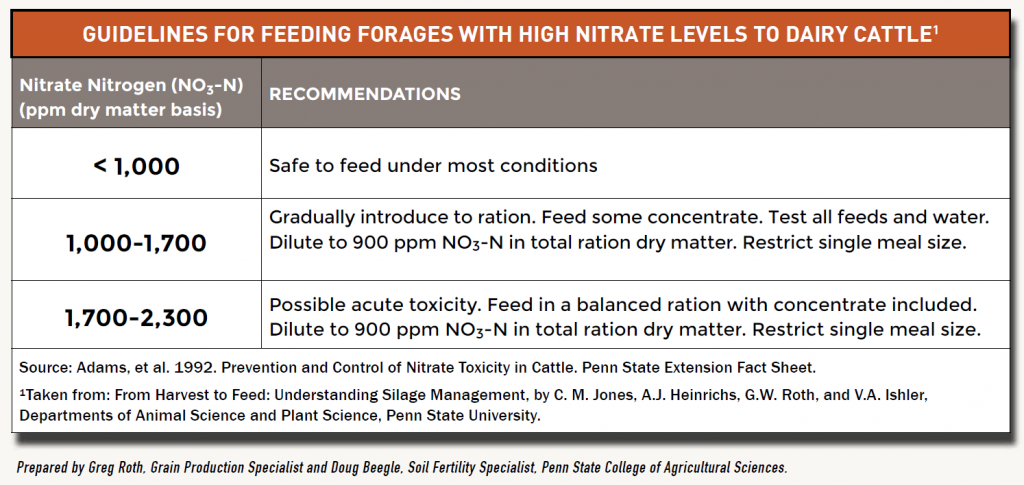While many fields experienced heavy rains this year, many areas experienced lower-than-normal moisture conditions, forcing an early corn silage harvest and Increasing the potential for high nitrates.
High nitrates essentially bind with protein in an animal’s hemoglobin, which prevents the blood from carrying oxygen. As a result, cells and body tissue suffocate and die.
Ways to reduce risk when harvesting and feeding low-moisture silage:
- Wait 3 to 5 days after a rain before harvesting drought-stressed corn silage.
- Increase cutting height as most nitrates form in lower portion of the stalk.
- Allow silage to ferment at least 4 weeks as fermentation can reduce nitrate levels by 50 to 60%.
- Always test a few samples of any suspect corn silage before you feed.
- With matters of this sensitivity, I advise dairy producers and cattle feeders to enlist the help of a professional. Always test and consult with a nutritionist.

